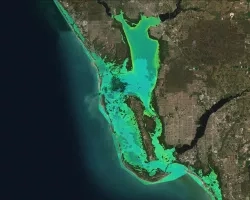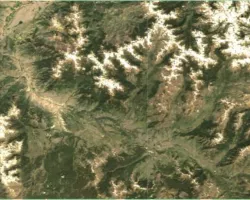This is a four-year Applications Project in response to the ROSES 2016 Ecological Monitoring RFP. Specifically, this proposal addresses topic: Remote Sensing as a Catalyst for Large-scale Conservation. The University of California Los Angeles (UCLA) and the United States Geological Survey (USGS) have partnered with the Bureau of Land Management (BLM), who will be the end-user organization of the products and tools produced during the proposed work. As steward of over 245 million acres of land across the western US, the BLM is tasked with conservation of animals and their habitat across these vast public lands. Several endangered or at risk animal species are present on BLM land, including the Mojave desert tortoise (Gopherus agassizii, endangered), greater sage grouse (Centrocercus urophasianus, at risk) and bighorn sheep (Ovis Canadensis, at risk). Conservation of these species and their habitat are a critical mission of the BLM. In response to these, and other, needs the BLM has embarked upon large-scale collection of field data that are critically related to plant and animal habitat needs: the Assessment, Inventory, and Monitoring (AIM) program. Although the AIM program explicitly calls for a remote sensing component, the agency has not yet been able to fully implement remote sensing strategies that will aid in making large-scale management decisions that impact species habitat and, specifically, habitat connectivity. The proposed work serves as a unique opportunity for the BLM to partner with organizations that have expertise in Earth surface remote sensing and rangeland ecology to fulfill its mandated conservation goals, including maintenance and improvement of habitat connectivity for both plants and animals. The goal of the proposed research is to produce a web-based front end tool that uses Google Earth Engine (GEE) to produce on-the-fly satellite data-derived estimates of key AIM variables. These tools will be accessible to BLM field office staff, state and national BLM technical advisors, policy makers, and other government and non-governmental entities. This tool will be used by BLM and other end-users in management decision-making; the use of this kind of data for decision making is already a key part of BLM's mandate. The tools we produce will be based upon relationships between AIM field data-derived ecosystem indicators and NASA Earth-observing satellite data that have been investigated and will be further refined during the first year-and-a-half of the project. The very high volume of high quality field data collected under AIM will allow thorough uncertainty analysis of the derived relationships, thus providing parallel confidence maps to give end-users the required tools (both values and uncertainties) upon which to make management decisions. Working closely with the BLM end-users during the second year of the project, we will develop an interface that is designed for their needs. The final year-and-a-half of the project will focus on testing and refining the GEE-dependent interface, independent testing of data products using existing high spatial-resolution imagery and existing BLM protocols, and production of deployment documents for the BLM.
Project


